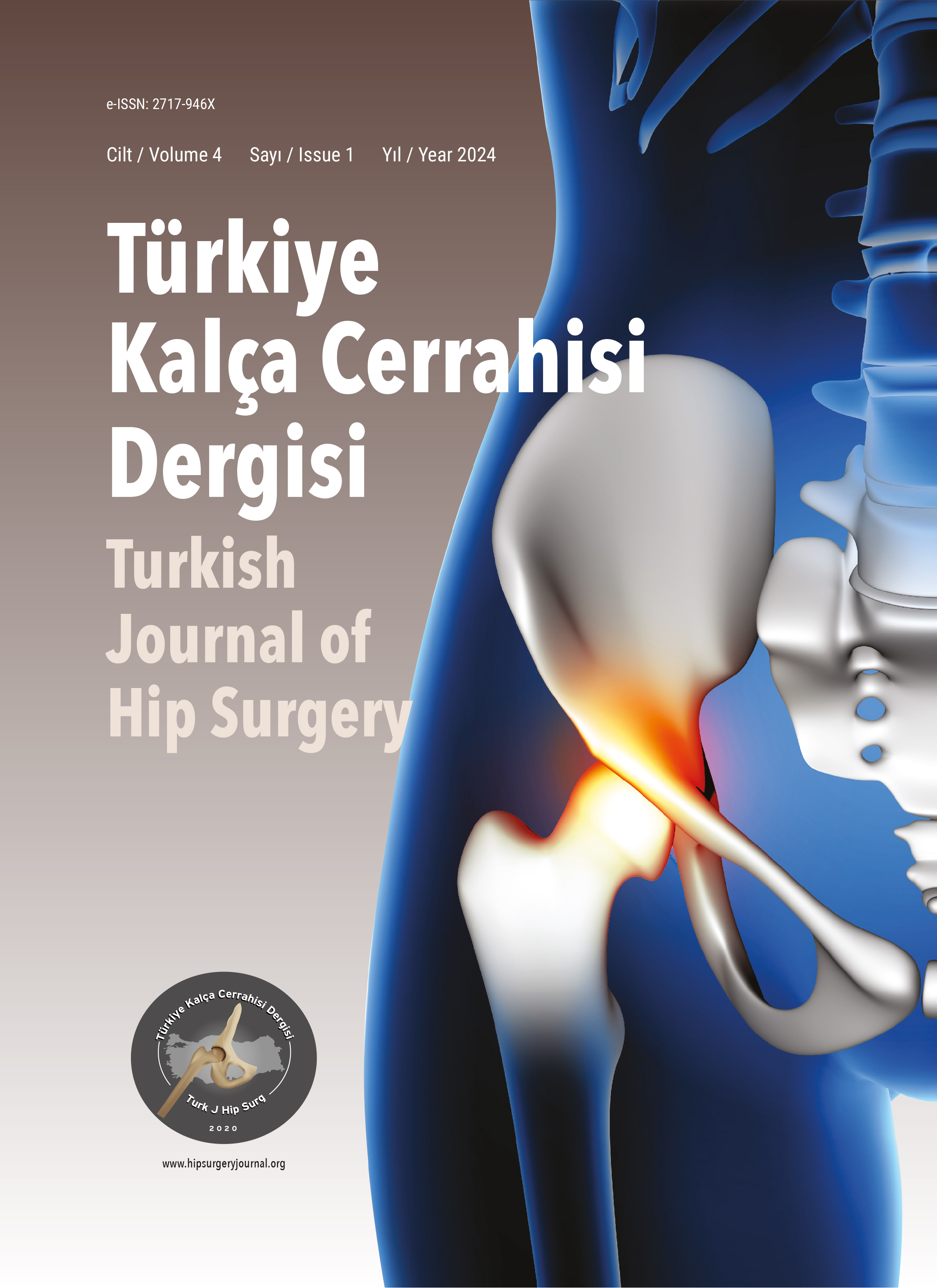
The Association Between Femoroacetabular Impingement and Internal Fixation of Femoral Neck Fractures
Ali Ihsan Kilic1, Ramadan Özmanevra2, Osman Nuri Eroglu31Department of Orthopedics and Traumatology, Siirt State Hospital, Siirt, Turkey2Department of Orthopedics and Traumatology, University of Kyrenia, Kyrenia, Northern Cyprus
3Department of Orthopedics and Traumatology, Dokuz Eylül University, İzmir, Turkey
Objective: Congenital deformities, slipped capital femoral epiphysis and Legg-Calve-Perthes disease have been suggested as possible causes for femoroacetabular impingement (FAI). The aim of our study is to describe the radiographic signs of FAI after femoral neck fractures and to compare these data with those of the contralateral hip.
Method: Our institutional medical records database was retrospectively searched for patients 18-50 years old with a history of femoral neck fractures (OTA 31-B) between 2010-2019. Fifty-two patients were identified. After exclusion criteria, we detected 37 fractures in 37 patients. The mean age of 29 male and 8 female patients was 32,7 (range 18-48) years. The antero-posterior and cross- table lateral views of bilateral hip joints for all 37 patients were reviewed preoperatively and at final follow-up. The mean follow-up period was 48 months (range 6-98 months). In addition, postoperative CT-scans of these patients were also reviewed.
Results: According to OTA classification subtypes, 2 subcapital (31B1), 25 transcervical (31B2) and 10 basicervical (31B3) fractures were detected. The mean alpha angle on lateral X-ray of the operated side was statistically significantly higher than the unaffected side. The mean alpha angle on CT was higher on the operated side than the unaffected side. In addition, the acetabular version angle on CT was higher on the unaffected side while acetabular depth on CT was higher on the operated side. The lateral CE angle on the AP X-ray was not different on the unaffected side compared to the operated side.
Conclusion: Symptoms of impingement can be seen in patients undergoing internal fixation after femoral neck fracture, and a decrease in acetabular version and an increase in acetabular depth may be predisposing to femoral neck fracture.
Femoroasetabular Sıkışma ve Femur Boyun Kırıklarının İçten Tespiti Arasındaki İlişki
Ali Ihsan Kilic1, Ramadan Özmanevra2, Osman Nuri Eroglu31Siirt Devlet Hastanesi, Ortopedi ve Travmatoloji Ana Bilim Dalı, Siirt2Girne Üniversitesi Tıp Fakültesi, Ortopedi ve Travmatoloji Ana Bilim Dalı, KKTC
3Dokuz Eylül Üniversitesi, Ortopedi ve Travmatoloji Ana Bilim Dalı, İzmir
Amaç: Konjenital deformiteler, femur başı epifiz kayması ve Legg-Calve-Perthes hastalığı, femoroasetabular sıkışma (FAI) için olası nedenler olarak öne sürülmüştür. Çalışmamızın amacı femur boyun kırıkları sonrası FAI'nin radyografik bulgularını tanımlamak ve bu verileri karşı kalça ile karşılaştırmaktır.
Yöntem: Kurumsal tıbbi kayıt veri tabanımız, 2010-2019 yılları arasında femur boyun kırığı (OTA 31-B) öyküsü olan 18-50 yaş arası hastalar için geriye dönük olarak tarandı. Elli iki hasta belirlendi. Dışlama kriterlerinden sonra 37 hastada kırık tespit ettik. 29 erkek ve 8 kadın hastanın yaş ortalaması 32,7 (dağılım 18-48) idi. 37 hastanın tamamı için bilateral kalça eklemlerinin ön-arka ve cross table lateral görünümleri ameliyat öncesi ve son takipte gözden geçirildi. Ortalama takip süresi 48 aydı (dağılım 6-98 ay). Ek olarak, bu hastaların postoperatif BT taramaları da gözden geçirildi.
Bulgular: OTA sınıflandırma alt tiplerine göre iki kırık subkapital (31B1), 25'i transservikal (31B2) ve 10'u bazoservikal (31B3) kırıktı. Opere edilen tarafın lateral X-ray'de ortalama alfa açısı istatistiksel olarak etkilenmeyen taraftan anlamlı olarak yüksekti. BT'de ortalama alfa açısı ameliyat edilen tarafta etkilenmeyen tarafa göre anlamlı olarak daha yüksekti. Buna ek olarak, istatistiksel olarak BT'de asetabular derinlik opere edilen tarafta yüksek iken, BT'deki asetabular versiyon açısı etkilenmeyen tarafta daha yüksekti. AP X-ray'de lateral CE açısında etkilenmeyen tarafla opere edilen taraf kıyaslandığında anlamlı fark saptanmadı.
Sonuç: Femur boyun kırığı sonrası internal fiksasyon yapılan hastalarda sıkışma bulguları görülebilmekte ve asetabular versiyonda azalma ve asetabular derinlikte artış femur boyun kırığı için predispozan olabilmektedir.
Manuscript Language: English









